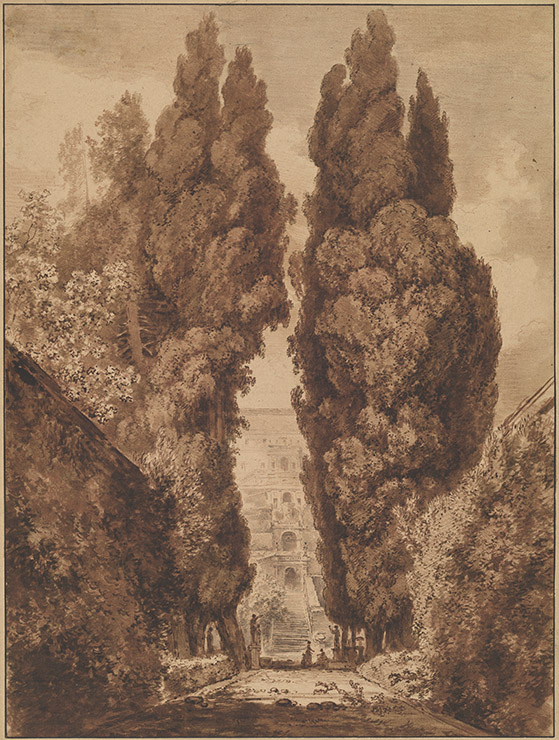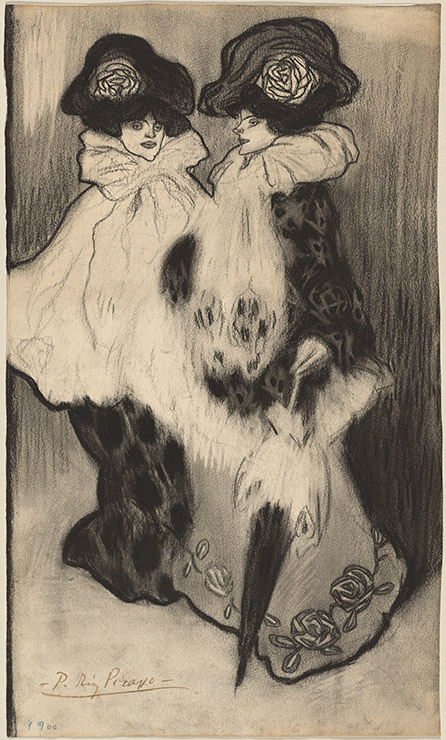
Pablo Picasso, Spanish, 1881 – 1973, Two Fashionable Women, 1900, charcoal, Woodner Collections, Dian Woodner. © 2017 Estate of Pablo Picasso/Artists Rights Society (ARS), New York 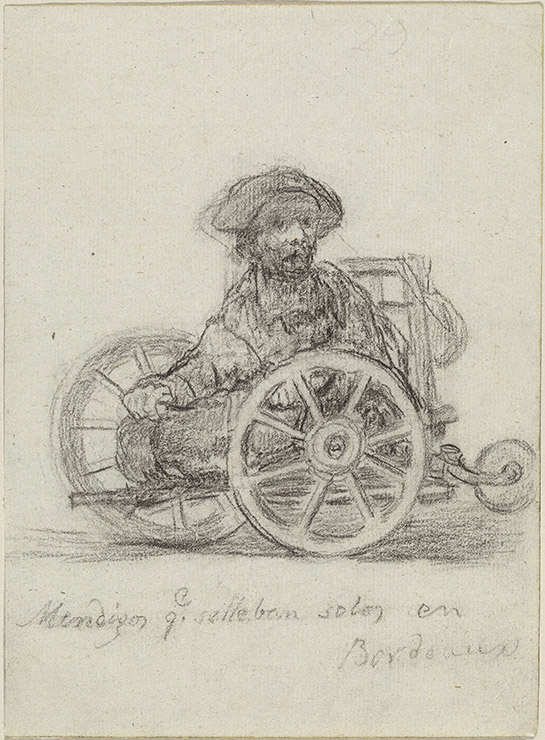
Francisco de Goya, Spanish, 1746 – 1828, Mendigos que se llevan solos en Bordeaux (Beggars Who Get about on Their Own in Bordeaux), 1824/1827, chalk on greenish paper, National Gallery of Art, Woodner Collection, 1993
Leonardo da Vinci, Albrecht Dürer, Raphael, Jean-Auguste-Dominique Ingres, Edgar Degas, Rembrandt van Rijn, and Pablo Picasso are some of the artists represented in the Woodner Collections, 106 drawings now up for only one more day at the National Gallery of Art.
Jean-Honoré Fragonard, French, 1732 – 1806, Avenue of Cypresses at Villa d’Este, 1760/1765, pen and ink with wash over chalk counterproof, National Gallery of Art, Woodner Collection, Gift of Dian Woodner, 2013
The 1000 works in the National Gallery's collections from Ian Woodner (1903-1990) and his daughters, Dian and Andrea, cover seven centuries, starting from around 1340 A.D. and ending with the 20th century. Some pieces are promised gifts to the Gallery.
The show stretches over several galleries, beginning with the Italians, then, the 18th and 19th centuries, 19th century watercolors, and beyond.
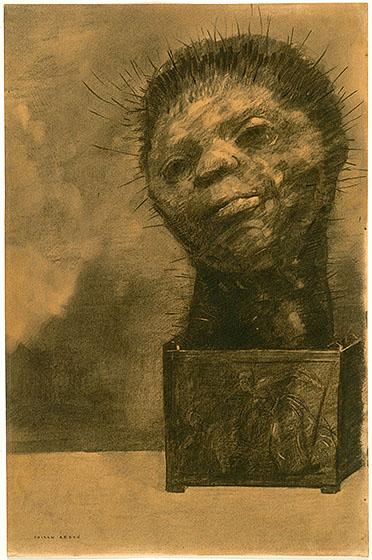
Odilon Redon, French, 1840 – 1916, Cactus Man, 1881, various charcoals with stumping, wiping, erasing, incising, and sponge work, Woodner Collections, Promised gift of Andrea Woodner
Mr. Woodner, a successful real estate developer, was an artist himself who began collecting in the 1950s. In his professional career, he helped design the Central Park Zoo and 1939 World's Fair buildings, and later he turned attention to development of residential and commercial properties in New York and Washington.
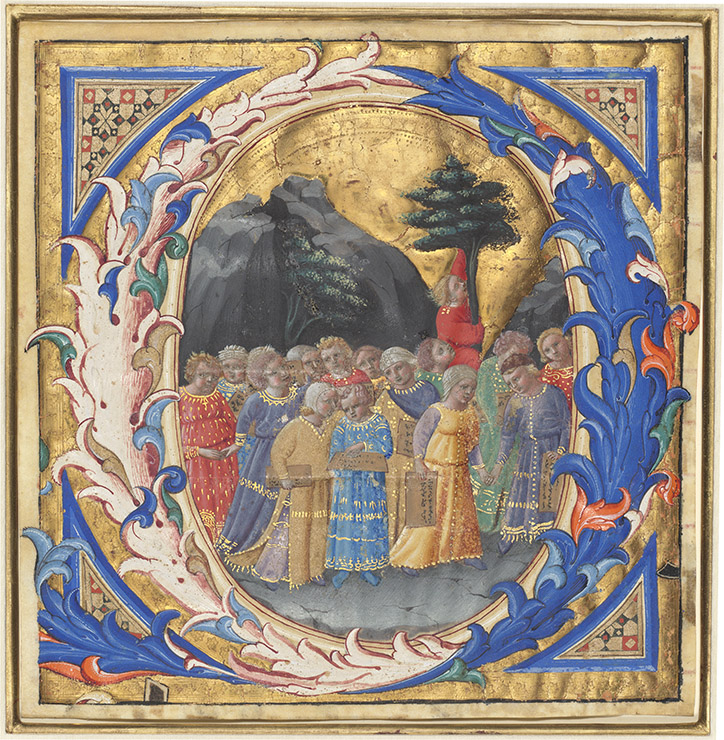
Zanobi Strozzi, Italian, 1412 – 1468, Initial Q with a Procession of Children, c. 1430s, tempera and gold leaf on parchment, National Gallery of Art, Woodner Collection, Gift of Dian Woodner, 2013
His watercolors and pastels enjoyed exhibitions in New York, Munich, London, Madrid, and Jerusalem. At the Woodner Apartments in Washington, some of Mr. Woodner's works may still be seen in the lobby.

Francisco de Goya, Spanish, 1746 – 1828, Mendigos que se llevan solos en Bordeaux (Beggars Who Get about on Their Own in Bordeaux), 1824/1827, chalk on greenish paper, National Gallery of Art, Woodner Collection, 1993
Leonardo da Vinci, Albrecht Dürer, Raphael, Jean-Auguste-Dominique Ingres, Edgar Degas, Rembrandt van Rijn, and Pablo Picasso are some of the artists represented in the Woodner Collections, 106 drawings now up for only one more day at the National Gallery of Art.
Jean-Honoré Fragonard, French, 1732 – 1806, Avenue of Cypresses at Villa d’Este, 1760/1765, pen and ink with wash over chalk counterproof, National Gallery of Art, Woodner Collection, Gift of Dian Woodner, 2013
The 1000 works in the National Gallery's collections from Ian Woodner (1903-1990) and his daughters, Dian and Andrea, cover seven centuries, starting from around 1340 A.D. and ending with the 20th century. Some pieces are promised gifts to the Gallery.
The show stretches over several galleries, beginning with the Italians, then, the 18th and 19th centuries, 19th century watercolors, and beyond.

Odilon Redon, French, 1840 – 1916, Cactus Man, 1881, various charcoals with stumping, wiping, erasing, incising, and sponge work, Woodner Collections, Promised gift of Andrea Woodner
Mr. Woodner, a successful real estate developer, was an artist himself who began collecting in the 1950s. In his professional career, he helped design the Central Park Zoo and 1939 World's Fair buildings, and later he turned attention to development of residential and commercial properties in New York and Washington.

Zanobi Strozzi, Italian, 1412 – 1468, Initial Q with a Procession of Children, c. 1430s, tempera and gold leaf on parchment, National Gallery of Art, Woodner Collection, Gift of Dian Woodner, 2013
His watercolors and pastels enjoyed exhibitions in New York, Munich, London, Madrid, and Jerusalem. At the Woodner Apartments in Washington, some of Mr. Woodner's works may still be seen in the lobby.
Curating the National Gallery's display was Margaret Morgan Grasselli, head of the Gallery's department of old master drawings.
We the people of the U.S. and visitors to the National Gallery of Art in Washington, D.C. are grateful to the Woodners for their splendid gifts to the National Gallery whose walls fill with spectacular art for the people to see with free admission.
Thank you.
What: The Woodner Collections: Master Drawings from Seven Centuries
When: The National Gallery of Art is open 10 a.m. - 5 p.m., Monday through Saturday and 11 a.m. - 6 p.m., Sunday. The exhibition closes Sunday, July 16, 2017.
When: The National Gallery of Art is open 10 a.m. - 5 p.m., Monday through Saturday and 11 a.m. - 6 p.m., Sunday. The exhibition closes Sunday, July 16, 2017.
Where: The ground floor of the West Building, the National Gallery of Art, between Third and Ninth streets at Constitution Avenue, N.W., Washington, D.C. On the Mall.
Admission charge: None
Metro stations for the National Gallery of Art:
Smithsonian, Federal Triangle, Navy Memorial-Archives, or L'Enfant Plaza
For more information: 202-737-4215
patricialesli@gmail.com
